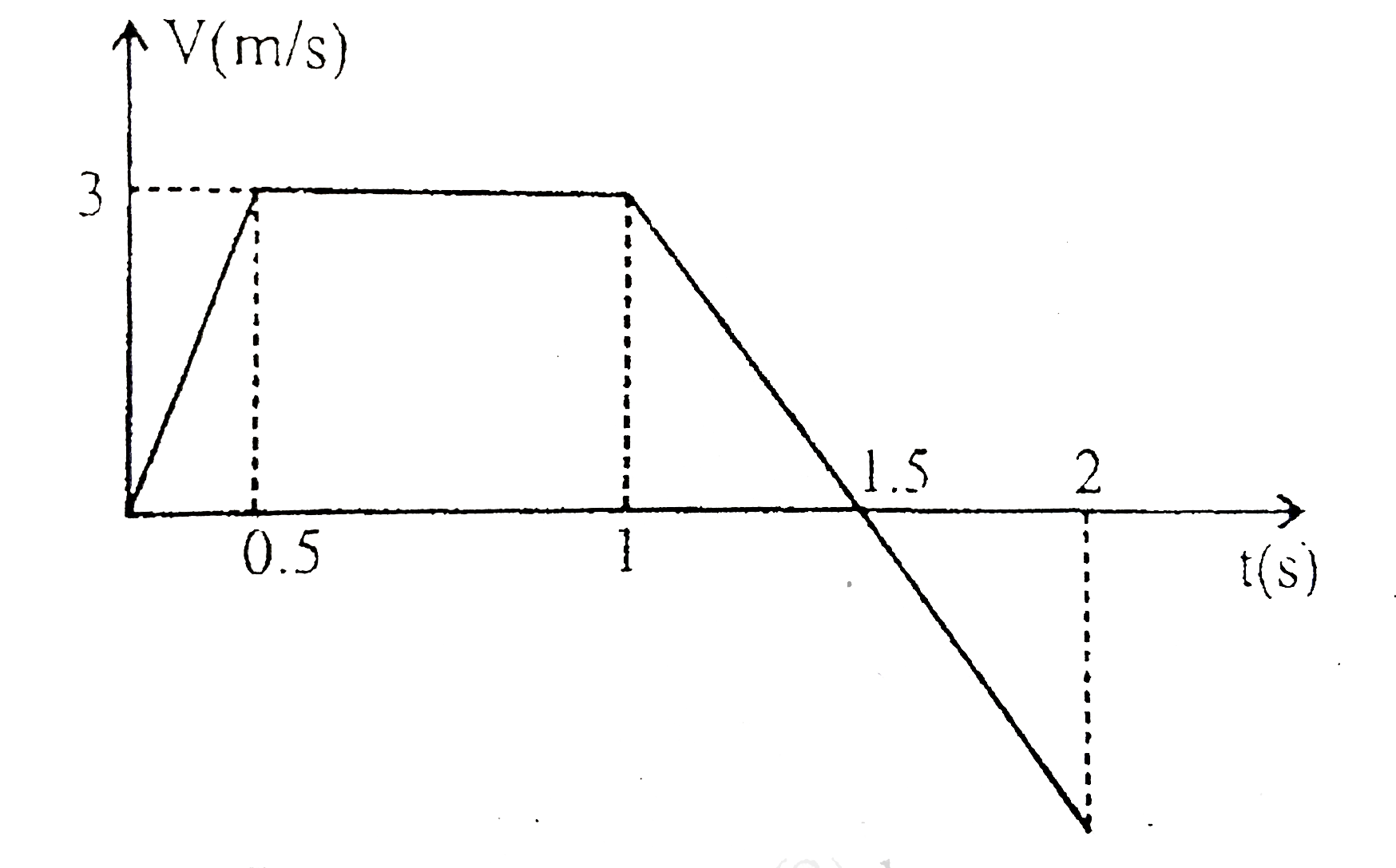A particle is at rest at x=a. A force →F=bx2→i begins to act on the particle. The particle starts its motion, towards the origin, along X - axis. Find the velocity of the particle, when it reaches a distance x from the origin.
F=−bx2⇒ddt(p)=−bx2
ddt(mv)=−bx2⇒mdvdxdxdt=−bx2
mvdv=−bx2dx⇒vdv=−bmx2dx
∫v0vdv=∫xa−bmx2dx⇒v22=bm[1x]xa
v22=bm[1x−1a] ∴v=√2bm(a−xxa)
Topper's Solved these Questions
- LAW OF MOTIONBOOK - NARAYNACHAPTER - LAW OF MOTIONEXERCISE - EVALUATE YOURSELF - 1
11 Videos
- LAW OF MOTIONBOOK - NARAYNACHAPTER - LAW OF MOTIONEXERCISE - EVALUATE YOURSELF - 2
11 Videos
- KINETIC THEORY OF GASESBOOK - NARAYNACHAPTER - KINETIC THEORY OF GASESEXERCISE - LEVEL-III(C.W)
52 Videos
- MATHEMATICAL REVIEW & PHYSICAL WORLDBOOK - NARAYNACHAPTER - MATHEMATICAL REVIEW & PHYSICAL WORLDEXERCISE - C.U.Q
13 Videos
Similar Questions
A particle starts from the origin with a velocity of 2 cm/s and moves along a straight line. If the acceleration of the particle at a distance x cm from the origin be (2x−32)cms2, find the velocity of the particle at a distance 7 cm from the origin.
View SolutionA particle starts from rest at the origin and moves along the positive x direction. Its acceleration a versus position x graph is shown in the figure. The velocity of the particle at x = 6 m is?
View Solution
Knowledge Check
A particle starts from rest x = - 2.25 m and moves along the x - axis with the v - t graph as shown. The time when the particle crosses the origin is :
 A0.5 sB1 sC1.5 sD2 s
A0.5 sB1 sC1.5 sD2 sA particle is projected with velocity V0along axis x . The deceleration on the particle is proportional to the square of the distance from the origin i.e., a=ωx2.distance at which the particle stops is
A(3v202α)12B(2v03α)12C(2v203α)12D(3v202α)13A particle of mass m moves on the x-axis under the influence of a force of attraction towards the origin O given by F=−kx2ˆi. If the particle starts from rest at x = a. The speed of it will attain to reach at distance x from the origin O will be
A√2km[x−aax]1/2B√2km[a+xax]1/2C√km[axx−a]D√m2k[a−xax]1/2
A particle is kept at rest at the origin. A constant force →F starts acting on it at t=0. Find the speed of the particle at time t.
View SolutionIn the figure a graph is plotted which shows the variation of the x- component of a force that acts on a particle moving along the x-axis, with x. The particle starts from rest from the origin. Then
View SolutionA particle of mass m moves on the x-axis under the influence of a force of attraction towards the origin O given by F=−kx2ˆi. If the particle starts from rest at x = a. The speed of it will attain to reach at distance x from the origin O will be
View SolutionA particle moves along "x" -axis with an acceleration a=12x2ms−2 .The particle has zero velocity at "x=(-2)m" .Find the velocity of the particle (in m/sec)as it passes through origin.
View SolutionThree particles start from the origin at the same time, one with velocity u1 along the x-axis, the second with velocity u2 along the y-axis . Find the velocity of the third particles, along the x=y line so that the three particles may always lie on the same straight line.
View Solution
